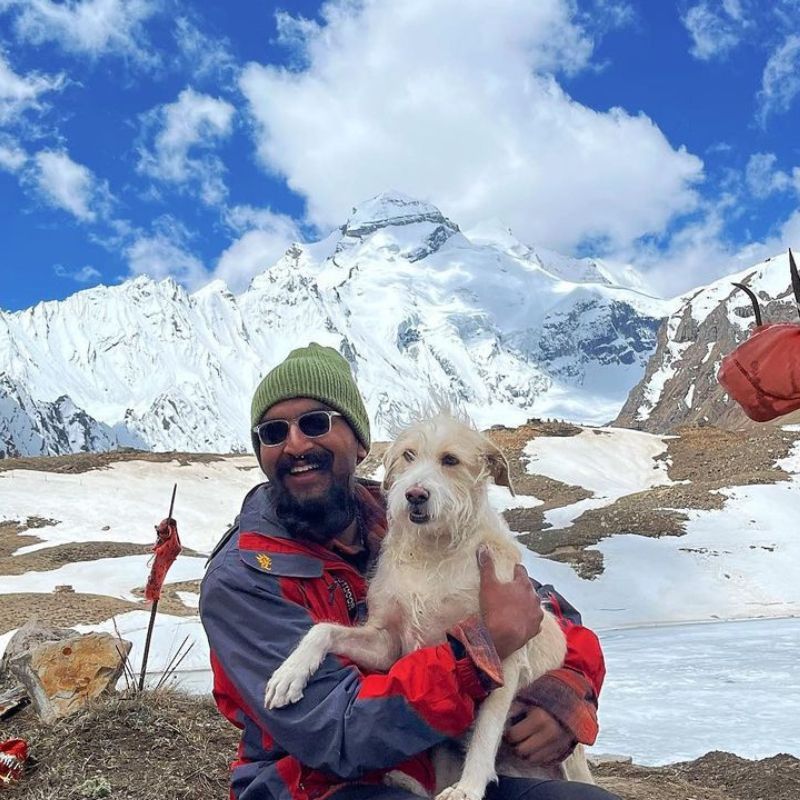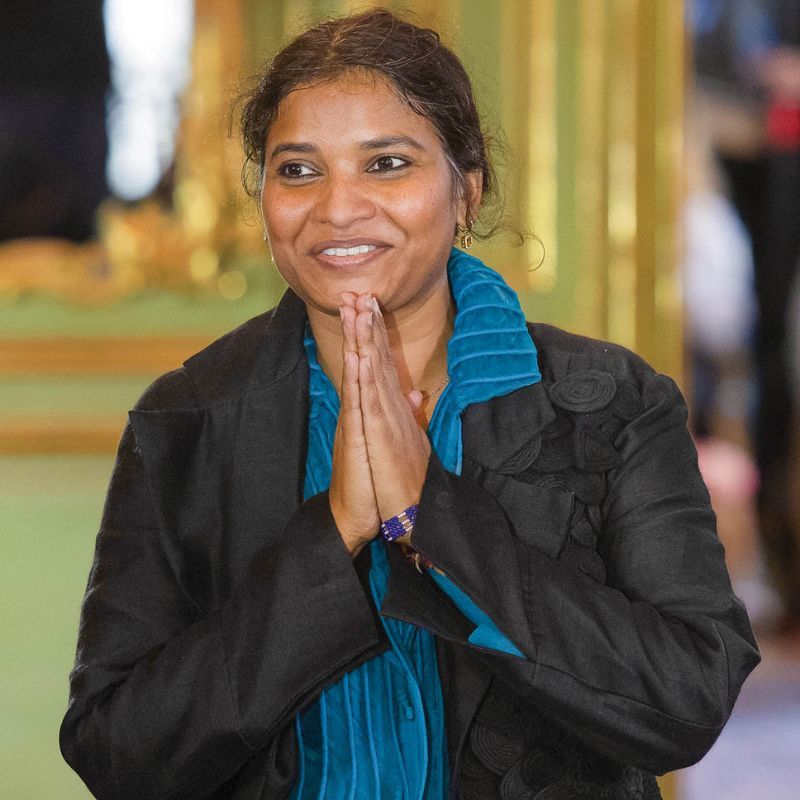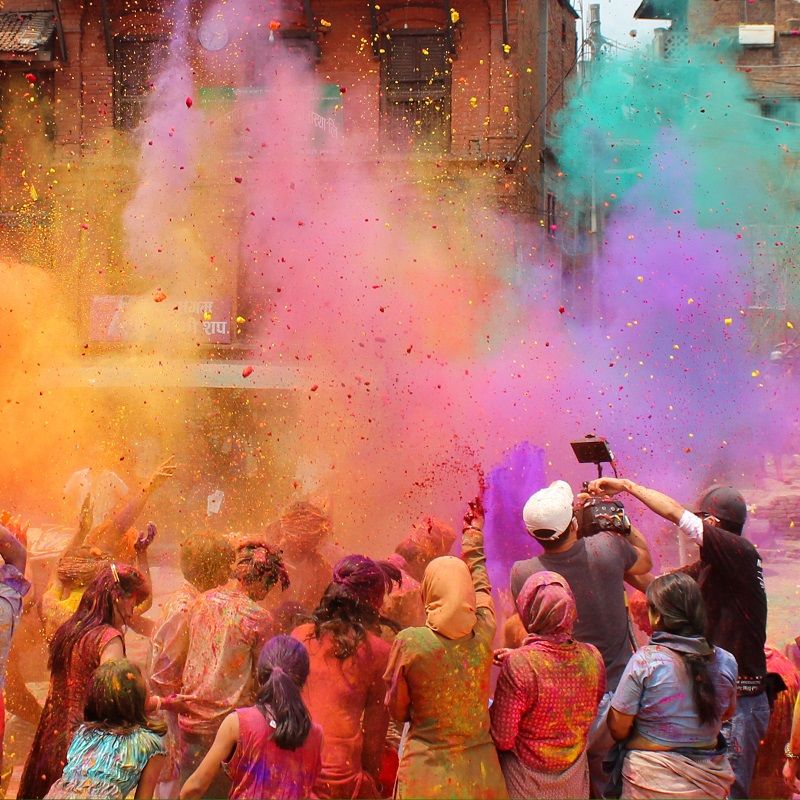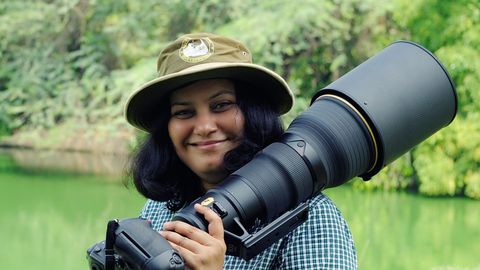
In an industry dominated by men, Rathika Ramasamy leads the charge as India’s first female wildlife photographer. From battling tough situations in the jungle to picking her favourite wildlife photography destinations, the fearless shutterbug bears it all for Travel + Leisure India & South Asia. By Bayar Jain
Excerpts from the interview with Rathika Ramasamy:
T+L India: You’re often credited as the first woman wildlife photographer from India. How did you foray into this creative field?
Rathika Ramasamy: My interest in photography started as a hobby in school. Since then, it has developed into a passion. My father gave me a film camera when I was in high school. I would shoot everything — my home garden, flowers, trees, and even the candy my parents bought! My camera was my constant companion whenever I would travel. I was interested in all kinds of photography but the experience of being outdoors in nature led me to specalise in this genre, particularly bird photography. It’s challenging, captivating, and interesting to learn also.
It all started around 2003 when I had the opportunity to visit Bharatpur Bird Sanctuary in Rajasthan. After seeing the birds, I wanted to capture them [in a photograph] so that I could enjoy seeing them again. I was also living in New Delhi at the time. I was surrounded by birds, sanctuaries and national parks that were the main route for migrating birds. This gave me the opportunity to shoot birds and specialise in bird photography. It’s been 19 years since, and there’s no looking back. The journey is going on wonderfully!
T+L India: Over the years, what changes have you noticed in wildlife photography?
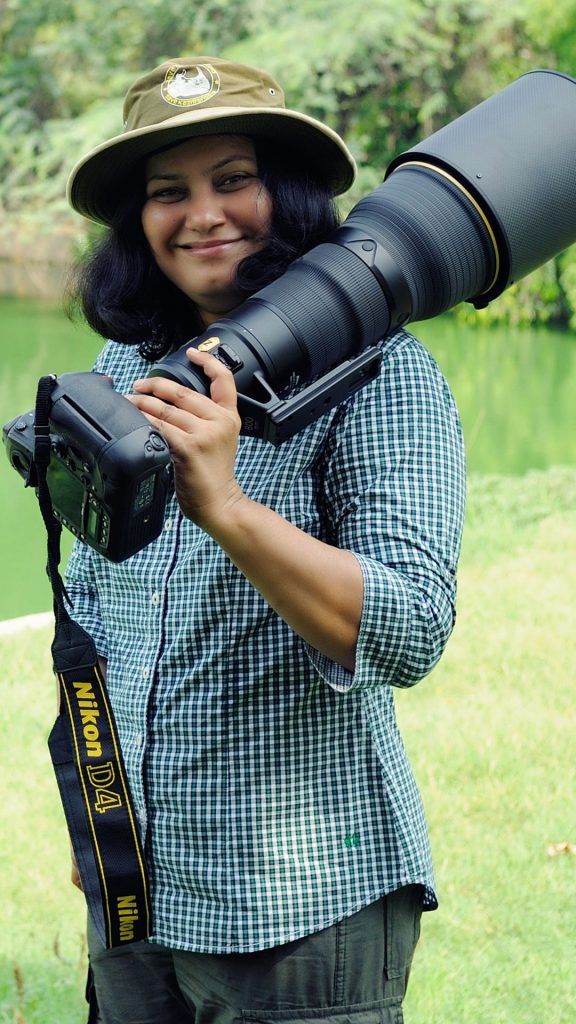
Rathika Ramasamy: Of course, the subjects are the same, but technology has changed — from film cameras and a digital SLR, to now using mirrorless cameras for shooting in the wild! Many people have started using camera traps and remote-controlled cameras too. It’s good for wildlife photography. More people are showing an interest in wildlife photography and tourism. There is more awareness for Wildlife Day or Tiger Day. Social media has also helped increase the popularity of wildlife photography.
But at the same time, the number of species have started to decline since I started 19 years ago. The threat to wildlife has increased. It’s important to conserve habitats to balance biodiversity. Unregulated tourism is also taking a heavy toll on wildlife and forests. It’s not enough to take beautiful photos. Having said that, we can use the images as a great tool to conserve nature. We have fast focus lenses and mirrorless cameras, so you won’t miss anything in the wild. So, technology-wise, we’ve got great things going on for wildlife photography.
T+L India: What were some challenges you faced while getting into this field, particularly as a woman?
Rathika Ramasamy: Fortunately, animals are not gender biased. Our forests are safe, so photographing the forests is a smooth ride. But, of course, if you are mentally and physically strong, there won’t be any problems. [One challenge is that] it’s not a nine-to-five job. It is also challenging to adapt to places where only basic amenities are available. The extreme weather conditions can be tough, too. There’s a lot of equipment that you need to carry for long hours. Initially, it was very tough to be in the field full day. Once you get used to it, it’s fine.
Being a homebody, being away from home and travelling a lot is also difficult. It’s all a part of the profession. When people get to see your portfolio of work, and if you’re good, no one sees you as a ‘woman’ or ‘man.’
T+L India: You’re also the founder of RR Foundation for Wildlife Conservation (RRFWC). Tell us more about the NGO.
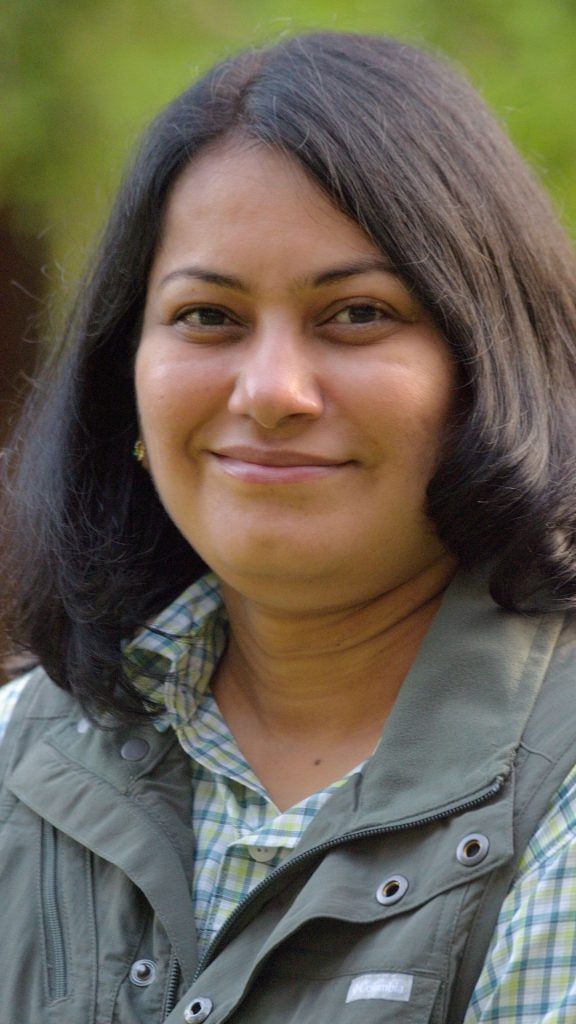
Rathika Ramasamy: Our motto is to save nature for the future. I’ve been conducting free workshops and conservation talks in colleges and universities for the last 15 years. I thought it was time to give back to the wild and reach more people, and thus RR Foundation for Wildlife Conservation (RRFWC) was formed. We want to create awareness among the young generation about wildlife and educate on the importance of wildlife conservation. We want to show how it’s a necessity to sustain the world, using photographs as a medium. We conduct free workshops for children aged 14 to 25 years to teach them the importance of biodiversity and sustainability. We want to promote wildlife conservation through safeguarding livelihood developments for local communities.
T+L India: Wildlife photography can be a lonely profession that requires hours of patience. How do you cope with this mentally?
Rathika Ramasamy: The basic pre-requisite for wildlife photography should be passion for nature. Sometimes, you won’t meet anyone in the forest for hours. In these hours, one should enjoy the surroundings otherwise it will be very tough. I like nature and I feel blessed to be in the forest. I enjoy getting chances to watch animals and be in close quarters with them. I see photography as a medium to connect with Mother Nature. For me, it’s like meditation. I feel calm and focussed. Being a nature-loving person, I don’t see it as a problem. Wildlife photography is not meant for someone who cannot be away from the hustle-bustle of city life. I can manage even 30 days!
T+L India: Tell us about some of your most challenging shoots in the wild. Where and how was it shot?
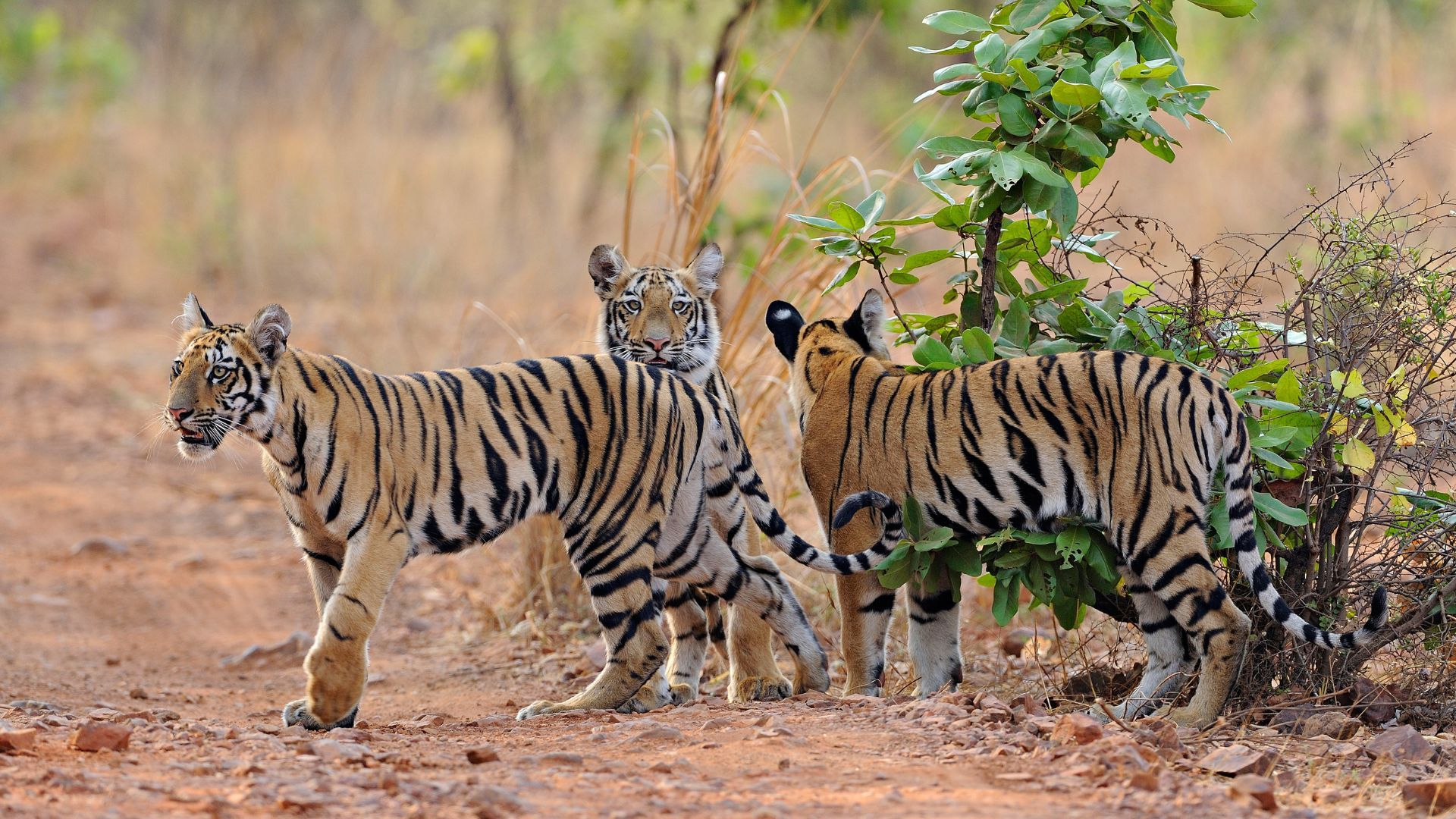
Rathika Ramasamy: Most bird photography requires a lot of walking. Choosing one challenging shoot is tough. One that comes to mind is from a few years ago when I was shooting in Sikkim. I think we were 7,000-8,000 feet above sea level, trying to capture the Himalayan Monal. The first day, we were 5,000 feet above ground level. After that, the oxygen levels also dropped. I was carrying my 800-metre lens as well. We finally reached only on the fourth or fifth day! The place didn’t have a proper hotel either. We weren’t sure whether the homestay would have food or not, let alone space to take a proper shower! It was very draining.
T+L India: Have you faced any tough or scary situations while in the wild? How do you assure your safety?
Rathika Ramasamy: When we enter national parks and tiger reserves, it can be tough. We need to sign indemnity bonds on booking safaris. It’s a form that says that if anything happens inside the forest, the government is not responsible. At the end of the day, we’re dealing with wild animals.
I come across many poisonous snakes while walking on birding nature trails. Once, in 2000, I was walking around Jim Corbett National Park. I was keen on sighting a tiger. We reached a narrow road where on one side there was a thick forest, and the other was a river. Suddenly, I saw an elephant charging towards my vehicle. The driver started backing away but much to our relief, the elephant turned and went the other way. That was very scary! In a split second, the elephant could have tossed our vehicle down the valley. People say tigers and lions are dangerous, but elephants can be worse. We have to be very careful.
T+L India: With the rise of social media, do you see a shift in photographers’ mindsets and imagery?

Rathika Ramasamy: If you like to showcase your work, you’ll have to depend upon print media. With the internet, it’s easy to focus on your work through a website, photography forums, and social networking sites. Earlier, queries would come through the website. Now, people message on social media DMs. So, the way of approaching the client has also changed. It’s very interesting because target audience marketing is needed to reach the targeted audience. People are no longer searching on Google; they are using Instagram. Social media is great for marketing as an artist.
For me, social media helps me reach more people and get more popular. People are showing an interest in birds, mammals, and marine photography. This is a good thing! New-age photographers tend to take photographs for documentation. It’s a more dynamic medium.
At the same time, if one wants to stay consistent in the field, then professional and commercial success needs to be sought outside of Instagram. Updating your website is also important. One should remain a content creator. Treat photography as an art form. I believe photographs are best enjoyed when you see in prints, especially wildlife photography. They need to be on websites for future generations.
T+L India: How can one be more mindful and conscious in the jungle?
Rathika Ramasamy: Subject knowledge is very important. One has to be observant. Spending more time in the forest helps learn more about animals and birds. One should be calm and follow rules of the local park. Respect the jungle and forest. Follow the ethics of wildlife photography. If we respect them, they will reward us.
T+L India: Your favourite destination for wildlife photography?
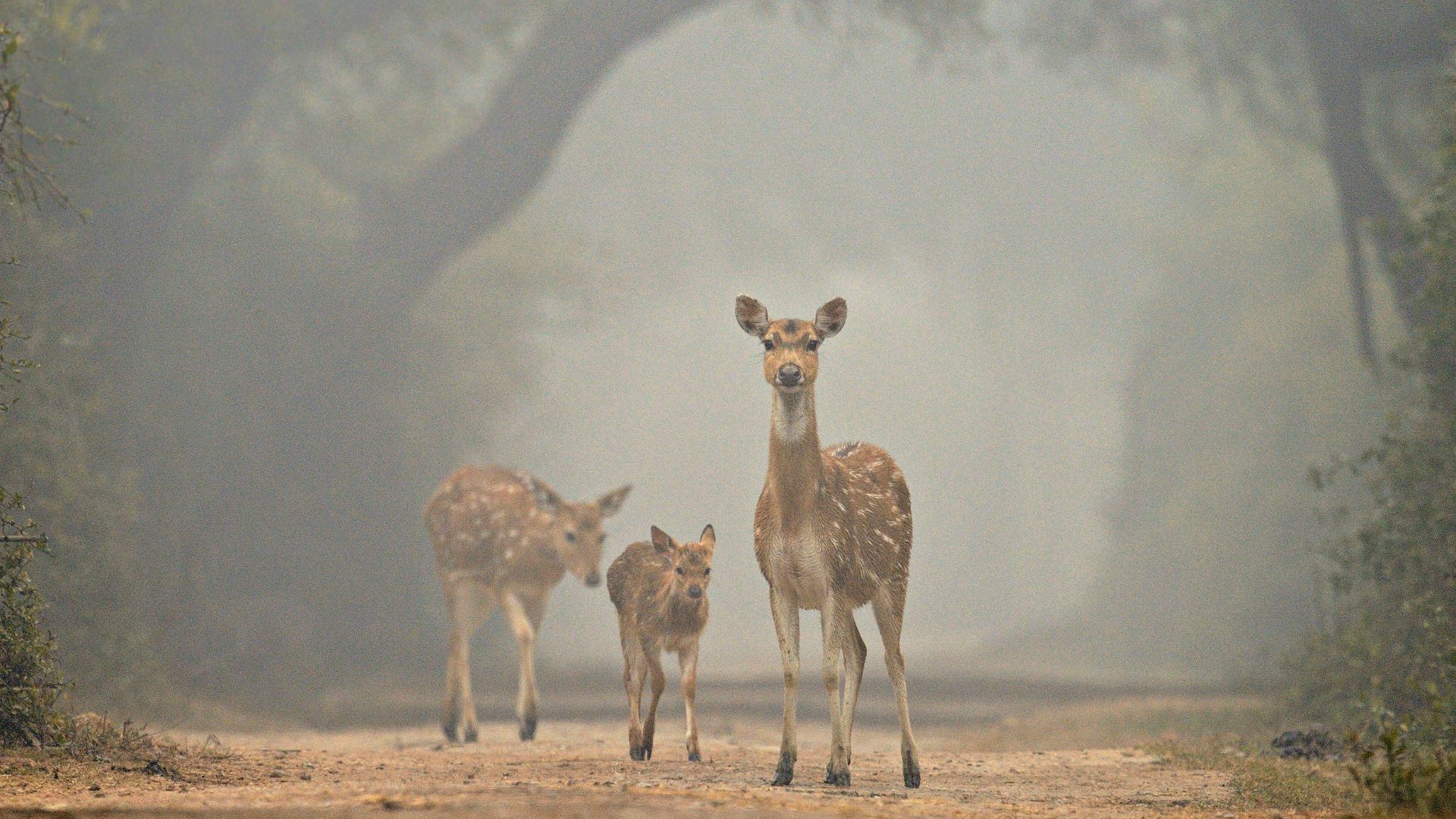
Rathika Ramasamy: This is tough! I love Bharatpur Bird Sanctuary for bird photography. For animals, it’s always Jim Corbett National Park. It’s a beautiful landscape and the park never ceases to amaze me.
T+L India: A bucket list destination?
Rathika Ramasamy: I would love to visit the Amazon rainforest at least once in my life. Borneo and Malaysia are on my bucket list as well.
T+L India: Any advice for budding wildlife photographers?
Rathika Ramasamy: Look beyond tigers and elephants. We have many places and species yet to be documented. Join this field if you love wildlife and nature. Be thorough with the basics of photography. Subject knowledge is important. You should be able to change your camera settings without looking through the viewfinder; it should be second nature to you. My advise is to specialise in wildlife photography if you’ve got passion and perseverance. You will be rewarded with memorable photographs. At the same time, try to be unique and consistent. If you love animals, nothing can stop you.
Related: Learn All About Wildlife Photography From T+L India’s A-List Member Latika Nath




